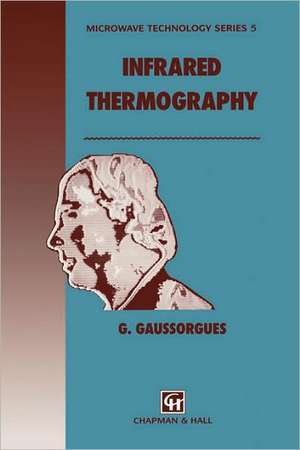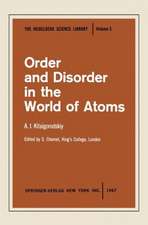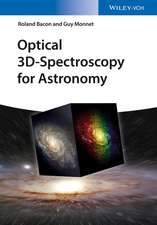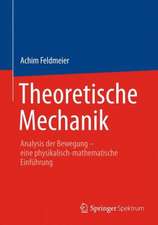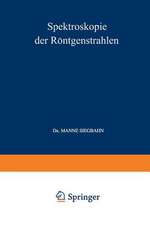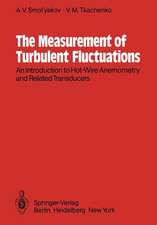Infrared Thermography: Microwave and RF Techniques and Applications, cartea 5
Autor G. Gaussorgues, S. Chometen Limba Engleză Hardback – 31 dec 1993
| Toate formatele și edițiile | Preț | Express |
|---|---|---|
| Paperback (1) | 1229.28 lei 6-8 săpt. | |
| SPRINGER NETHERLANDS – 23 oct 2012 | 1229.28 lei 6-8 săpt. | |
| Hardback (1) | 1235.43 lei 6-8 săpt. | |
| SPRINGER NETHERLANDS – 31 dec 1993 | 1235.43 lei 6-8 săpt. |
Preț: 1235.43 lei
Preț vechi: 1506.62 lei
-18% Nou
Puncte Express: 1853
Preț estimativ în valută:
236.43€ • 244.24$ • 196.77£
236.43€ • 244.24$ • 196.77£
Carte tipărită la comandă
Livrare economică 26 martie-09 aprilie
Preluare comenzi: 021 569.72.76
Specificații
ISBN-13: 9780412479007
ISBN-10: 0412479001
Pagini: 508
Ilustrații: XV, 508 p.
Dimensiuni: 155 x 235 x 30 mm
Greutate: 0.95 kg
Ediția:1994
Editura: SPRINGER NETHERLANDS
Colecția Springer
Seria Microwave and RF Techniques and Applications
Locul publicării:Dordrecht, Netherlands
ISBN-10: 0412479001
Pagini: 508
Ilustrații: XV, 508 p.
Dimensiuni: 155 x 235 x 30 mm
Greutate: 0.95 kg
Ediția:1994
Editura: SPRINGER NETHERLANDS
Colecția Springer
Seria Microwave and RF Techniques and Applications
Locul publicării:Dordrecht, Netherlands
Public țintă
ResearchCuprins
1 Revision of Radiometry.- 1.1 The radiometric chain.- 1.2 Radiant flux.- 1.3 Geometrical spreading of a beam.- 1.4 Radiance.- 1.5 Irradiance.- 1.6 Radiant exitance.- 1.7 Radiant intensity of a source in a given direction.- 1.8 Quantity of radiation and exposure.- 1.9 Bouguer’s law.- 1.10 Radiation scattering.- 1.11 Note on units.- 2 Origins of Infrared Radiation.- 3 Thermal Emission by Matter.- 3.1 Black-body radiation.- 3.2 Different types of radiator.- 3.3 Problems with the emissivity of a material.- 3.4 Thermodynamic equilibrium.- 3.5 Problems with the reflectance of a material.- 3.6 Example of an application.- 3.7 Emissivity of materials.- 3.8 Emission from the interior of a medium.- 3.9 Other sources of infrared radiation.- 4 Transmission by the Atmosphere.- 4.1 Self-absorption by gases.- 4.2 Scattering by particles.- 4.3 Atmospheric turbulence.- 4.4 Methods for calculating atmospheric transmission.- 4.5 A practical method for calculating atmospheric transmission.- 5 Optical Materials for the Infrared.- 5.1 Propagation of an electromagnetic wave in matter.- 5.2 Optical properties of a medium.- 5.3 Physical properties of optical materials.- 5.4 Types of material.- 5.5 Properties of some optical materials.- 6 Optical Image Formation.- 6.1 Geometrical optics.- 6.2 Aberrations of optical systems.- 6.3. Calculation of geometrical aberrations.- 6.4 Diffraction.- 7 Scanning and Imaging.- 7.1 Radiometers.- 7.2 Radiometers for spatial analysis.- 7.3 Thermography.- 7.4 Scanning methods.- 7.5 Imaging.- 7.6 Imaging with multi-element detectors.- 7.7 Electronic imaging.- 8 Spectral Filtering.- 8.1 Spectral transmittance of materials.- 8.2 The properties of thin layers.- 8.3 Antireflective thin films.- 8.4 Filters.- 9 Radiation Detectors.- 9.1 Generalities.- 9.2Characteristics of detectors.- 9.3 Noise.- 9.4 Detector sensitivity.- 9.5 Thermal detectors.- 9.6 Different types of thermal detector.- 9.7 Quantum detectors.- 9.8 Different types of quantum detector.- 9.9 Applications of detectors.- 9.10 Multielement detectors.- 9.11 Detectors used in thermography.- 9.12 Charge coupled devices.- 9.13 Infrared charge coupled devices (IRCCD).- 9.14 Sprite detectors.- 9.15 Detector cooling.- 10 Signal Processing.- 10.1 The analogue signal.- 10.2 Processing of analogue signals.- 10.3 Processing of digital signals.- 10.4 Example of application.- 11 Characterisation of infrared systems.- 11.1 Generalities.- 11.2 Characteristics of infrared detectors.- 11.3 Calculation of the characteristics of infrared systems.- 11.4 Measurement of the characteristics of an infrared system.- 11.5 Example: Characterisation of a system.- 12 Imaging and Measurement.- 12.1 Spatial resolution.- 12.2 Thermal resolution.- 12.3 Imaging and measurement.- 12.4 Examples of applications.- 13 Choosing the Spectral Band.- 13.1 Spectral emissivity.- 13.2 Radiated power.- 13.3 Thermal contrast.- 13.4 Atmospheric transmission.- 13.5 Radiation detectors.- 13.6 Stray radiation due to the measuring system itself.- 13.7 Conclusions.- 13.8 Two-band thermal imaging.- 14 Industrial and Military Applications.- 14.1 Infrared thermography in nondestructive testing.- 14.2 Thermography in industrial processes.- 14.3 Acquisition, digitisation and processing in two-band image processing.- 14.4 Infrared signatures – new acquisition and processing techniques.- 14.5 Integrated systems for the nuclear industry.- 14.6 Conclusions.- 15 Infrared Spectroradiometry.- 15.1 Spectroradiometry.- 15.2 An infrared spectroradiometer.- 16 Line Scanners.- 16.1 First generation thermography.- 16.2 Secondgeneration thermography.- 16.3 The infrared line scanner.- 16.4 Description of the ATL 100 system.- 16.5 ATL 100 used for welding control.- 16.6 Example of application: control of roll welding.- 16.7 The HGH ATL infrared scanner.- 16.8 Applications of the ATL 020.- 16.9 The Agema THP 5 and 6 infrared scanner.- 16.10 The HGH ATL 080 infrared scanner.- 17 Advances in Thermographie Systems.- 17.1 Agema (Sweden).- 17.2 Avio-Nippon Avionics (Japan).- 17.3 Inframetrics (USA).- 17.4 Comparison of infrared sensitivities of different thermographie systems.- 17.5 Inframetrics 700.- 17.6 Cooling of detectors.- Colour and Black and White Plates.
